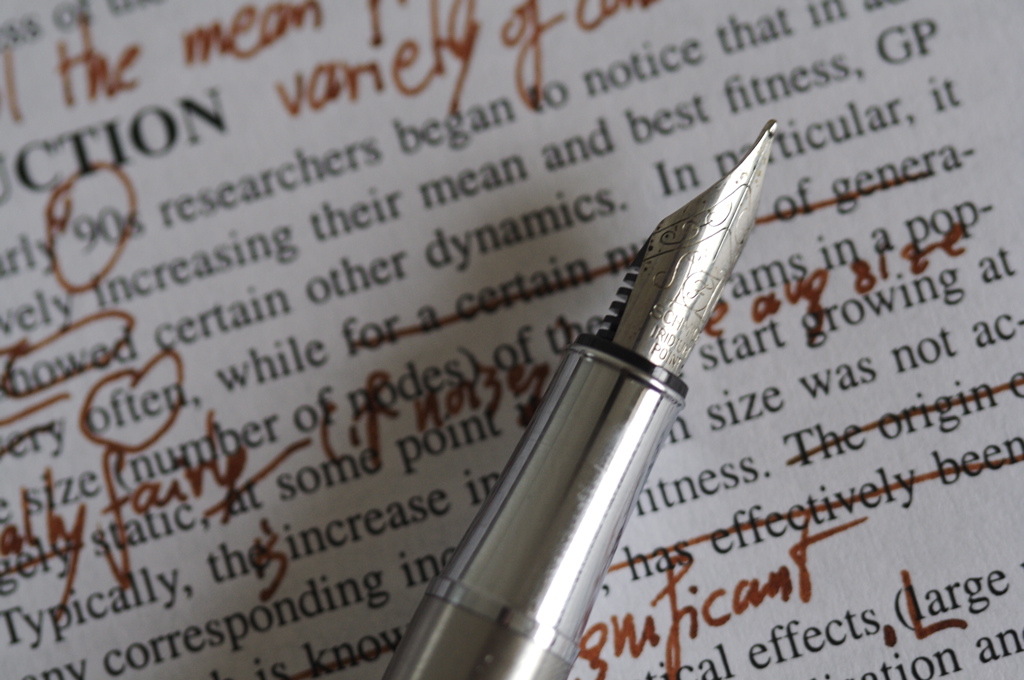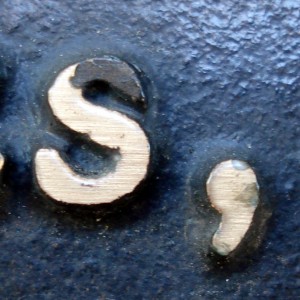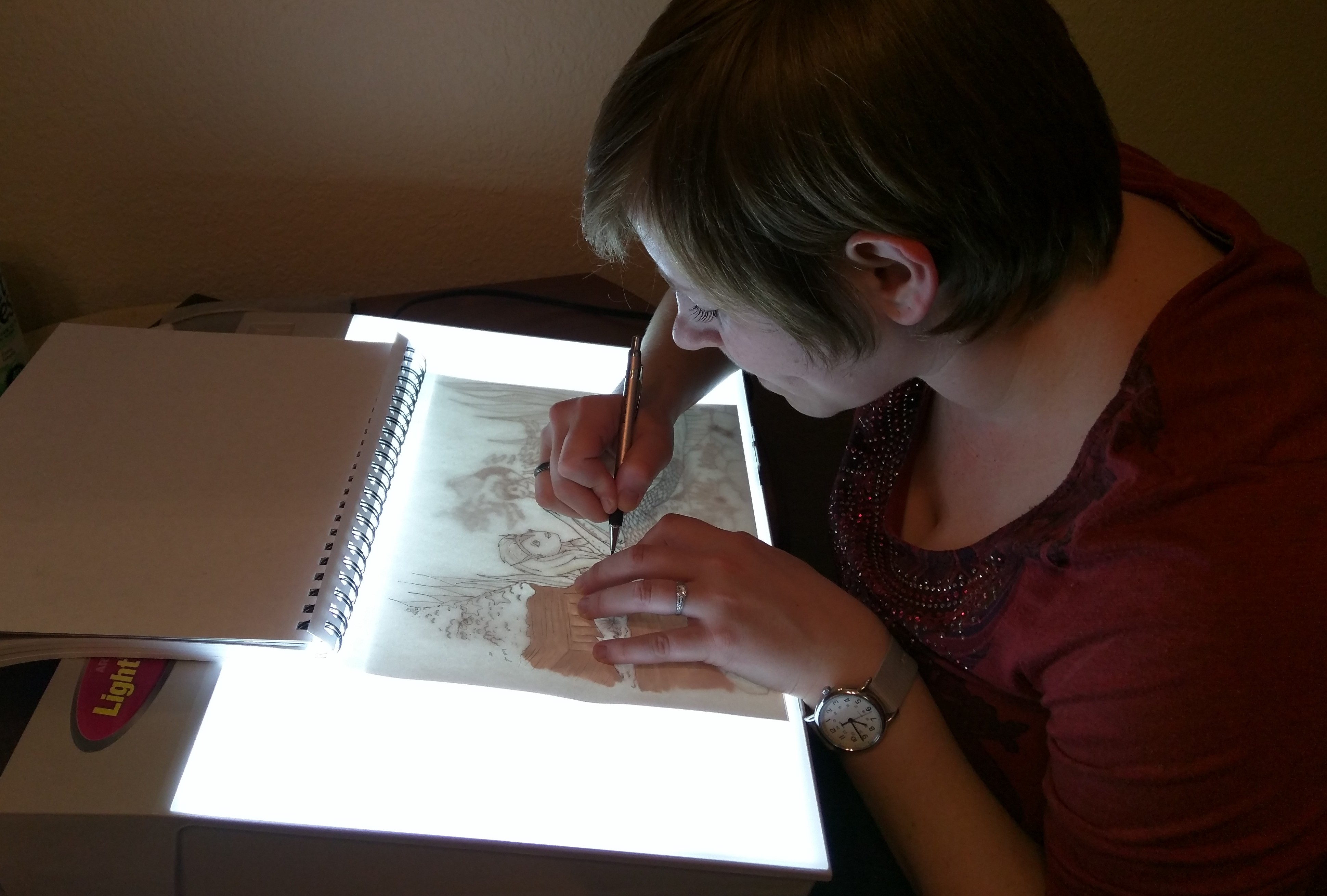
A to Z Challenge: U is for Understanding Our Flaws in Writing

 As writers, we all have certain tendencies. There are things that we each do when we write that should be avoided, yet we are helpless to stop ourselves from doing them. These are our crutches in writing: the things we need to look out for while editing, because we know they’ll be there. They always are.
As writers, we all have certain tendencies. There are things that we each do when we write that should be avoided, yet we are helpless to stop ourselves from doing them. These are our crutches in writing: the things we need to look out for while editing, because we know they’ll be there. They always are.
I have crutches. I’m sure you do too, even if you haven’t been able to discern them yet. Usually, you will find these things out, by having other people read your writing and help you along the way: beta readers, family members, editors, agents, etc.
My crutches are: comma use (too many), re-using the same words too close together, and telling instead of showing. I’m going to explain each in a little more detail below.
Comma Use:

In school I was taught, wherever you would naturally pause in a sentence, that is where you should place a comma. It is the device used to indicate the pause, especially for those reading aloud. So, that’s how I would use them…and use them…and use them. When I received my edited manuscript back from a friend who’d been looking it over, the first thing I noticed was how many of my commas had been crossed out.
Designating pauses was just one possible use for a comma. Sometimes certain words already make you pause and an additional comma isn’t necessary. Needless to say, I needed to do more studying up on when to use those pesky commas. Here is a list from Purdue University on when, they suggest, commas should be used and when they are better left out.
For issues like comma use, all we can do is try to study more and understand the whys and why nots about when to use them. I’m still trying to figure this one out.
Re-Using the Same Words too Close Together:
At this time, I wasn’t too sure what she was trying to say. Maybe she wasn’t happy with how our lives were going together. Maybe it was, at this time in her life, that she needed to be single again and couldn’t be bothered with me anymore.
The little blurb above I wrote to better illustrate my point. In this little narrative piece, I used the phrase “at this time” twice within two sequential sentences. I can look at the same document three times and not always catch such repetition. I didn’t even realize it was one of my crutches until a friend, and fellow writer, Athena Greyson (@AthenaGreyson), clued me in on it.
If you are going to use repetition in your work, make it purposeful. For example:
There was nothing more to be said. I wasn’t going to change who I was for her. I wasn’t going to get help. I wasn’t going to be the person she wanted me to be. How could she not have known what she was getting into when she married me? It wasn’t like I hid my tendencies. She must have just been too blind to see them, or they didn’t matter at the time. Why does it matter now?
![Photo credit: [phil h] via Foter.com / CC BY-NC-ND](http://blog.jhwinter.com/wp-content/uploads/2016/03/32360213_e24a0a2854_b-300x166.jpg)
Sometimes it will take three or four times reading your own work (often even more) to find the repetitions you don’t mean to be there. Be patient with your writing and have your eyes open. Read through, just trying to pick out these areas. When you are editing, looking at your work as a whole can let these little things skate by. A more focused eye will let you see them more clearly.
Telling Instead of Showing:
This topic I am going to discuss in more detail another time, but I will mention this: telling can often read like a timeline or a series of events; showing puts you into the scene.
I went in my room. Sitting down on my bed, I opened my laptop to write.
Instead of doing the first example’s this-happened-and-then-that-happened “telling” format, consider something like this:
Slamming my door behind me, I was finally left alone in the silence that could only be found in my upstairs bedroom. It was more like a glorified closet really, but it was my “fortress of solitude”. My bed let out a pained creak as I sunk my body down into its waiting arms. Reaching over to my bedside table, I grabbed my laptop and the brightness of its login screen drowned out the rest of the world and the life that I had going on outside these four small walls.
Sound words are used here: slamming, silence, and “pained creak”. There are sight words too, “…brightness of its login screen…”. That is a big difference between showing vs. telling. By adding in sensory words and details, you feel as though you are there with the character instead of just watching from a distance.
These are a few of my known flaws in writing, what are yours? How do you go about finding them and correcting them?





12 Comments
Melissa Sugar
An extra pair of eyes is always the best way to find the flaws in our writing and you are so right about all of us having our own set of flaws. I have to look out for the word “was.” It creeps in far more often than I ever imagined and I never noticed it until a beta reader pointed it out to me. Now I not only see it jump out on the screen, I see it jump out, when used repetitively in other books I read. What a fabulous post. I learn best by example and you did such an outstanding job of explaining each flaw and then following it up with perfect demonstrations. Thanks for the examples.
Melissa Sugar @
Melissa Sugar Writes
JHWinter
You’re welcome! I always find that having examples helps ingrain the concept into my head. Without them, concepts can be difficult to understand. Thank you for stopping by, Melissa!
Jill
Very helpful post. Thanks!
Like you, I use too many commas. Too many exclamation points, not enough periods. I’m also not very good at showing, I’ve been working on that.
JHWinter
I was told I didn’t use enough exclamation points! There’s one 🙂
Jackie
Great post, and enjoyed your writing in the examples of how to do things correctly!
JHWinter
Thank you, Jackie!
Arlee Bird
I know I have plenty of writing flaws and I try to take care to avoid them or fix them when I see them. I’m one who definitely would benefit from extra sets of eyes.
Arlee Bird
A to Z Challenge Co-host
Tossing It Out
JHWinter
I think we can all stand to have an extra set of eyes on our work. No doubt, we should all have more than one set. It’s nice when you finally realize what your flaws are though, so that you can try to avoid them in future writing. As always, thank you for your comments, Arlee!
Karen
I am learning to understand my writing flaws but still have a ways to go. The ones that you highlighted I struggle with as well especially the commas and repetitive words/phrases. While I don’t think I use too many commas, I do use too few. I’m always a little unsure of where to stick them. I’ll have to check out your link for tips on comma usage. My writing flaw that really drives me the crazy though is repetitive words. I’ve found about 5-6 that I use constantly. I can’t seem to stop myself. I’m always removing them in the editing process. I suspect I also tell rather than show and will be watching for that flaw now too. Great job showing the difference on that one.
JHWinter
Thank you so much, Karen! I feel like the first step in bettering ourselves as writers, is to know what our flaws are, so we can pick them out as we go. The next step will be not doing them in the first place, but that will take a bit of time to master. 🙂
Ros
Interesting topic 🙂 Understanding our flaws is important in everything I think – certainly in my job anyway!
Ros
Fangirl Stitches cross stitching A-Z
Travel like a Geek Harry Potter Tour
JHWinter
Agreed. Sometimes it can be difficult to see those flaws though until someone else points them out. Once you know what they are, they stand out like a sore thumb. It may not prevent us from doing them in the first place, but we’ll certainly notice them when we edit.